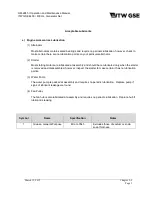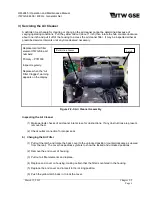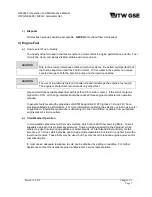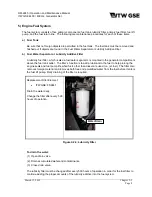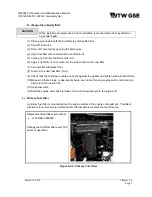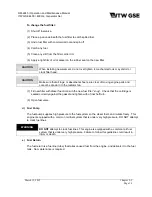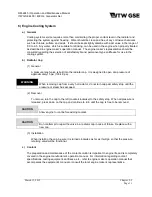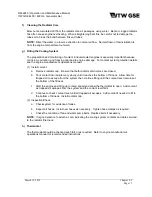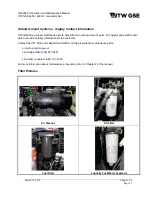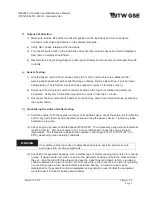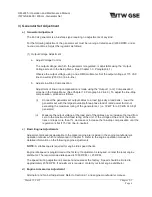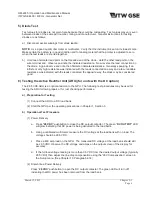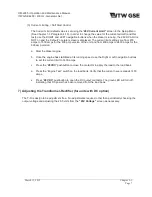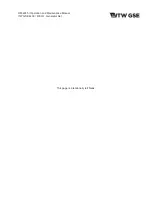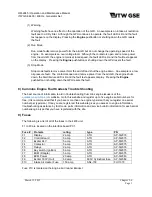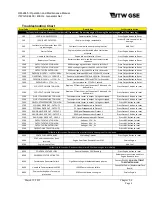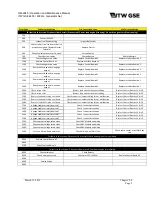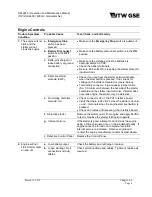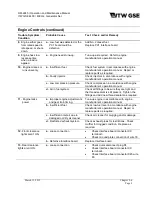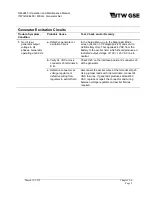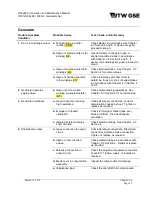
OM-2245 / Operation and Maintenance Manual
ITW GSE 4400 / 400 Hz. Generator Set
March 15, 2015
Chapter 2-3
Page 3
f) Output 2 Verification:
1) Make sure that the EF switch is in the ON position on the load bank and turn on Output 2.
Contactor must close and indicator on the display illuminate.
2) Verify 'ABC' phase rotation at the load bank.
3) Turn the EF switch OFF on the load bank and verify that contactor opens and fault is displayed.
Red lamp on display should flash.
4) Reset Output 2 by pressing Output 2 button again. Display should resume normal operation with
no faults.
g. Sensor
Testing:
1) At rated speed, restrict the air cleaner intake to 5% of the normal inlet area. Blocked Filter
warning shall appear with amber light flashing on display. Remove Restriction. Fault will reset
automatically. (The left arrow will need to be pressed to remove it from the screen.)
2)
Disconnect “Low Coolant” switch connector located o
n the top of the radiator and start your
stopwatch. Verify Low Coolant Warning (amber) occurs in less than 1 minute.
3) Reconnect the low coolant switch and put on top canopy. Clear Low coolant warning by pressing
the engine button.
h) Re-checking the entire unit after testing
(1) Start the engine. With the engine running at normal rated speed, check the entire unit for vibration
and for any parts that may have become loosened during the above checks. Tighten any loose
hardware as required.
(2) Check engine oil pressure at rated speed (2000 RPM). The oil pressure gauge should indicate at
least 44.9 psi (3.1 bar) when engine is hot. Also at rated speed, check the engine coolant
temperature. The temperature gage should indicate in the range of 180°F to 190°F (82ºC to
88ºC), depending upon operating conditions.
WARNING
If a metal sounding rod is used to detect bearing noises, exercise extreme care to
avoid injury from moving components.
(3) Check 400 Hz generator bearings. Use a stethoscope or metal sounding rod to listen for unusual
noises. If using a metal rod, place on end on the generator housing and hold the other end near
the ear. Hold the rod with three fingers and use the index finger and thumb to form a sounding
chamber between the rod and the ear. Do NOT allow the rod to touch the ear. Listen for grinding
or pounding sounds, which would indicate a defective bearing. An engine noise may be
telegraphed to the generator and misinterpreted as a generator noise. Contact the equipment
manufacturer if in doubt of bearing serviceability.

